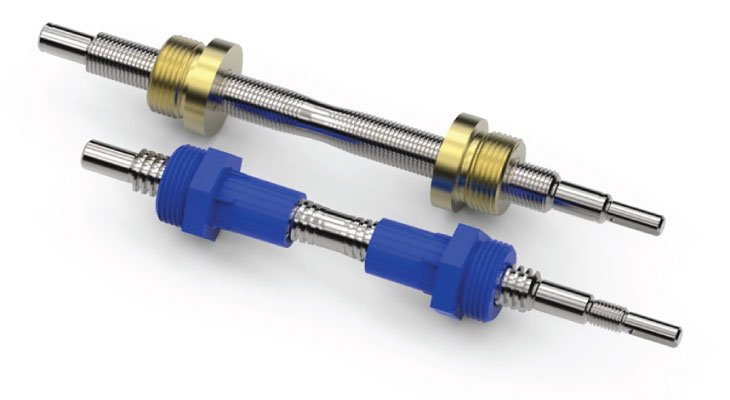The Best Acme Screw Glossary and Technical Data

The Acme thread form, established over 100 years ago, replaced square thread screws. Square thread screws had straight-sided flanks and were challenging to manufacture, making the Acme thread form a great improvement. There are three main classes of Acme thread forms:
- General Purpose – This thread form has a nominal depth of thread of 0.50 x pitch and has a 29° included thread angle. Some Helix sizes have a 40° included angle. Trapezoidal thread forms have a 30° included thread angle.
- Centralizing – Centralizing threads are manufactured with tighter tolerances and reduced clearance on the major diameter.
- Stub Acme – These threads follow the same basic design but have a thread depth of less than one-half the pitch

Trapezoidal thread forms have a 30° included thread angle. When compared to general-purpose thread forms, centralizing threads are manufactured with tighter tolerances and reduced clearance on the major diameter.
If an acme nut is side loaded with a radial load, a "G" class will "wedge" when the nut thread flanks come in contact with the screw thread flanks. To prevent wedging, less clearance and tighter tolerances are allowed between the major diameter of the nut and the major diameter of the screw.
A word of caution: Although a side load will not cause a centralizing thread to wedge, the nut is not designed to operate with a side load such as a pulley, drive belt, etc.
Other acme screw terms include:
Land (Major) Diameter
The outside diameter of the screw.
Pitch Diameter
On an acme screw, this diameter is approximately halfway between the land diameter and the root diameter. It is the diameter at which the thread thickness is equal to the space between threads.
Root (Minor) Diameter
The diameter of the screw is measured at the bottom of the thread.
Pitch
The axial distance between threads. Pitch is equal to the lead in a single start screw.
Lead
The axial distance the nut advances in one revolution of the screw. The lead is equal to the pitch times the number of starts.
PITCH × STARTS = LEAD
NOTE: Nook Industries acme screw designations reference major diameter and effective turns per inch. For example ¼" -4 RH requires four turns for one inch of travel. A ¼" -4 RH has four starts and a 0.062" pitch.
0.062" PITCH × FOUR STARTS = 0.250" LEAD
Have a question that's not answered here? Call us. Our number is 1-855-435-4958. You can also reach out by email at sales@helixlinear.com.


